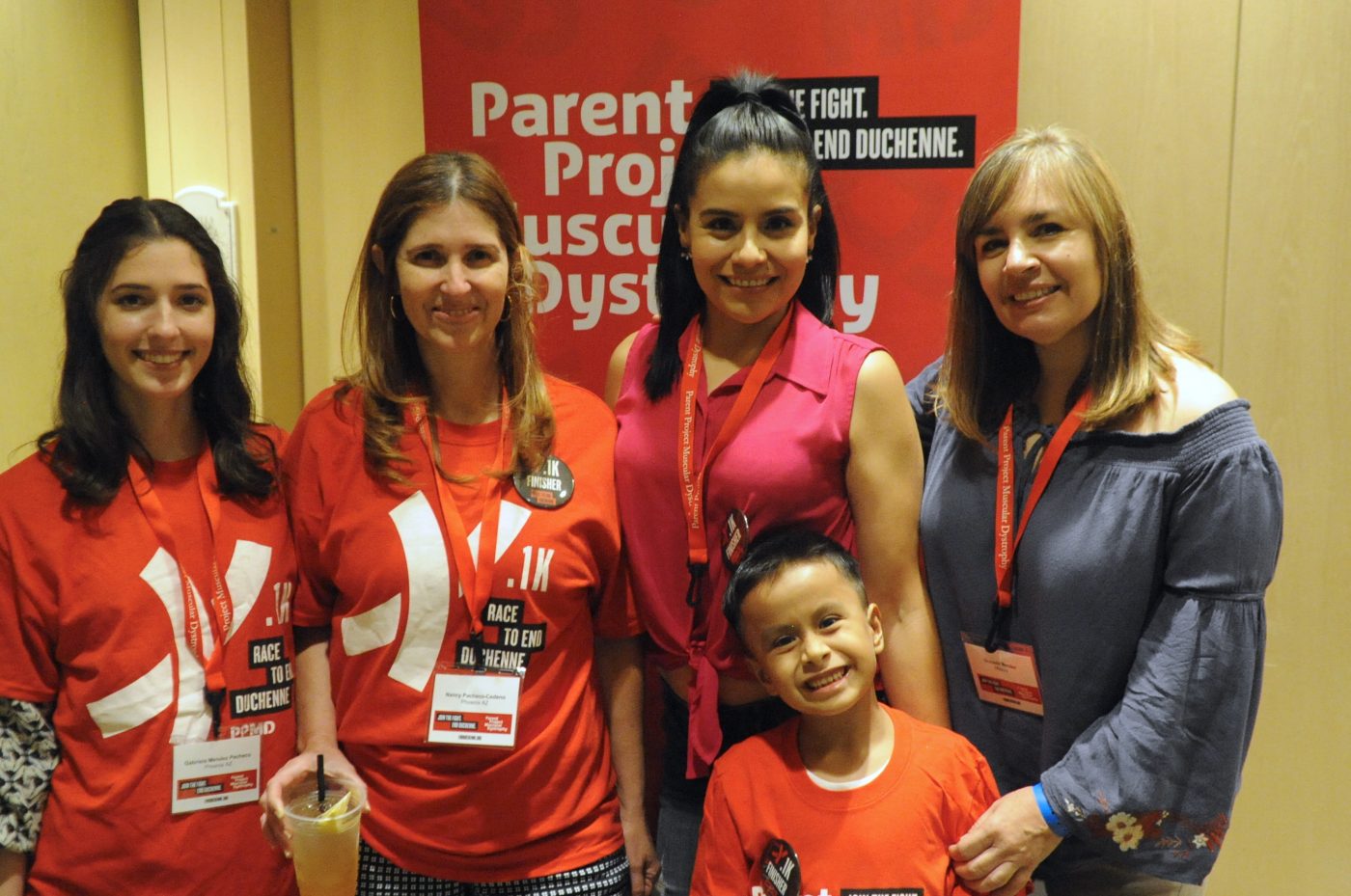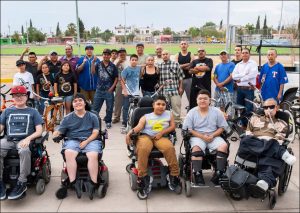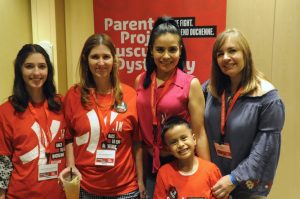#PPMD2018 – Mexico Lags in Degree and Quality of Duchenne Care, Advocacy Groups Say

Mexican delegates attend the PPMD's 2018 Annual Conference in Phoenix, Arizona. (Photo by Larry Luxner)
Coping with Duchenne muscular dystrophy is difficult enough in the United States. But in neighboring Mexico, people with Duchenne often face social discrimination, lack of access to the newest therapies, a financially strapped healthcare system, and general ignorance.
“Very few Mexicans know anything about this disease,” said Graciela Méndez Covarrubias, founder of the nonprofit group Enlace — one of five organizations in Mexico dedicated to caring for Duchenne patients in this nation of 126 million.
Méndez spoke to Muscular Dystrophy News Today, in Spanish, on the sidelines of the recent 2018 Annual Conference in Phoenix organized by Parent Project Muscular Dystrophy (PPMD).
Enlace, based in the northern Mexican city of Chihuahua, cares for 65 patients in that state, and 37 in the state of Nuevo León, which includes Monterrey, the country’s third-largest metropolitan area. Méndez said it is Mexico’s only nonprofit agency offering a multidisciplinary medical approach to Duchenne and Becker muscular dystrophy patients.
“In all of Mexico, we think there must be 6,000 cases of Duchenne, but we’ve identified only 1,000,” said Méndez, who came to Arizona to learn about the latest developments in Duchenne research from her U.S. colleagues. “In general, people are referred to us only when they can no longer walk.”
Duchenne an uphill battle in Mexico
Enlace, founded in 2000, operates on an annual budget of about four million pesos (roughly $200,000) and employs seven people full-time.
Part of the difficulty, she said, stems from a society that has not traditionally accepted people with disabilities, compounded by a lack of resources. In Mexico, the cost of caring for a patient with Duchenne is about $150 a month — which by U.S. standards is quite low.
“But considering our standard of living, it’s very expensive,” said Méndez, who has a 23-year-old nephew with Duchenne. “In Mexico, life expectancy could be the same as in the U.S., but only if he receives good treatment.”
Enlace is authorized to give medical consultations, do lab studies, prescribe treatments and provide genetic analysis, psychotherapy, wheelchairs and transportation.
“Parents who work have social security, but those who don’t receive nothing,” she said. “For example, hemophilia is considered a rare disease, so they cover medications. But Duchenne is not included as a rare disease. This is why we are struggling.”
Becoming ‘rare,’ accessing newer therapies
Besides Enlace, four other Mexican organizations work with Duchenne patients: Sociedad Mexicana de Distrofía Muscular (SMDM) in Mexico City; Asociacion de Distrofia Muscular de Occidente in Guadalajara; Asociación Leonesa para la Distrofía Muscular (ALDIM) in León; and Ave Sin Vuelos in San Luís Potosí.
The five groups collaborate on various projects, including the dissemination of Spanish-language materials about Duchenne and Becker muscular dystrophy online and via social media.
“We get together in order to lobby support from the government. But the truth is, the government doesn’t help us,” Méndez said. “They don’t provide medications, wheelchairs, ventilators or transportation. Together, our five organizations are trying to get them to include Duchenne as a rare disease so catastrophic expenses will be covered.”
SMDM, founded in 1996, operates under the jurisdiction of Mexico City’s Instituto Nacional de Rehabilitación.
Rosa Elena Escobar, medical secretary for the association, said that her nonprofit has attended to 445 Duchenne patients since 2005, many of whom have since died. SMDM currently treats more than 100 Duchenne patients, including one woman.
“Some of our patients are as young as 2 years old, but the average age is 5 to 7. We also have older kids in wheelchairs,” Escobar, reached by phone in Mexico City, said. “Most of our patients don’t have insurance coverage. Our society doesn’t have much money, but we do help with medications and wheelchairs.”
Escobar said her clinic can perform muscular biopsies as well as multiplex ligation probe amplification (MLPA) to identify deletions and duplications within the dystrophin gene in Duchenne patients. It also prescribes Emflaza (deflazacort), a corticosteroid used as an anti-inflammatory and immunosuppressant, she said, adding that Mexico does not yet have access to newer treatments such as Exondys 51 (eteplirsen) or Translarna (ataluren).
“Life expectancy for Duchenne patients is Mexico is about 18 years old,” Escobar said. “The steroids have helped. We’ve had access to steroids for about 10 years. Before that, patients would usually die at 13 to 15.”
Better times ahead?
Enlace’s Méndez said she’s hoping a dramatic change in government will finally bring about Duchenne’s reclassification as a rare disease. Andrés Manuel López Obrador, the former mayor of Mexico City, was elected president in July on a sweeping anti-corruption and anti-establishment campaign. His was a landslide victory, carrying 31 of Mexico’s 32 states and claiming more than twice the number of votes given his strongest rival.
AMLO, as he is known, has also promised to reform Mexico’s healthcare system to even out inequalities — but until he actually takes office on Dec. 1, all that patients, families, and groups like Enlace can do is wait.
Meanwhile, Enlace survives thanks to donations from multinational companies such as Starbucks, McDonald’s and Textron Aviation, which manufactures helicopter parts at a factory in Chihuahua, as well as nonprofits like Rotary International and Universidad La Salle.
Local success stories, she said, include Duchenne patients Ernesto Baltazar, who achieved his dream of writing an autobiography, “Aprender a Vivir” [Learning to Live]; Ramón Tapia, whose quality of life has significantly improved following a pacemaker implant; and Joel Alejandro Murillo, who recently graduated college with a degree in nutrition despite his disability.








